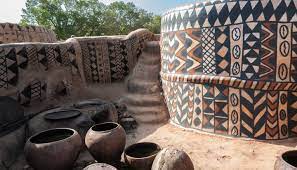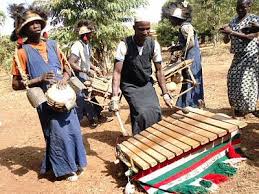This post explains the culture of Burkina Faso which includes art, literature, theater, religion and in addition it defines cultural heritage and list the heritage sites.
CULTURE
The culture of Burkina Faso in West Africa is also called the Burkinabé culture.
Two key elements of culture in Burkina Faso (a country once known as Upper Volta) are its indigenous masks and dancing. The masks used in this region of the western Sahel are made for rites of sacrifice to gods and animal spirits in the villages. Native dance, on the other hand, is employed to demonstrate the villagers’ desire for blessings by the spirits.

LITERATURE
Literature in Burkina Faso is based on the oral tradition, which remains important. In 1934, during French occupation, Dim-Dolobsom Ouedraogo published his Maximes, pensées et devinettes mossi (Maximes, Thoughts and Riddles of the Mossi), a record of the oral history of the Mossi people. The oral tradition continued to have an influence on Burkinabé writers in the post-independence Burkina Faso of the 1960s, such as Nazi Boni and Roger Nikiema. The 1960s saw a growth in the number of playwrights being published. Since the 1970s, literature has developed in Burkina Faso with many more writers being published.
Read: REGIONS OF BURKINA FASO
THEATRE
Theatre of Burkina Faso combines traditional Burkinabé performance with the colonial influences and post-colonial efforts to educate rural people to produce a distinctive national theatre. Traditional ritual ceremonies of the many ethnic groups in Burkina Faso have long involved dancing with masks.
ART
In addition to several rich traditional artistic heritages among the various peoples, there is also a large artist community in Burkina Faso, especially in Ouagadougou. Much of the crafts produced are for the growing tourist industry. Tigoung Nonma was set up by a group of disabled artisans and sells crafts to provide a sustainable income for disabled artisans in Burkina Faso.
RELIGION
While exact statistics on religion in Burkina Faso are not available and vary widely, the Government of Burkina Faso estimated in its most recent census (1996) that approximately 60 percent of the population practice Islam, and that the majority of this group belong to the Sunni branch, while remaining minorities adhere to the Shi’a branch, and significant numbers of Sunni Muslims identify with the Tijaniyah Sufi, or Salafi traditions. Ahmadiyya Islam also has a large following. The Government also estimated that 24 percent of the population maintains traditional indigenous beliefs, 17 percent practices Roman Catholicism, and 3 percent are members of various Protestant denominations.
HERITAGE IN BURKINA FASO
Cultural heritage can be defined as the legacy of physical artifacts (cultural property) and intangible attributes of a group or society inherited from the past. Cultural Heritage is a concept which offers a bridge between the past and the future with the application of particular approaches in the present.
Heritage Sites
| Site | Inscribed | Category | Reviews | Rating |
| Ancient ferrous metallurgy sites | 2019 | Cultural | 1 | 2.22 |
| Ruins of Loropéni | 2009 | Cultural | 2 | 2.2 |
| W-Arly-Pendjari Complex | 1996 | Natural | 4 | 2.21 |
Tentative List
| Site | Added | Scheduled | Category | Reviews | Rating |
| Cour royale de Tiébélé | 2011 | Cultural | 2 | N/A | |
| La réserve de Biosphère de la Mare aux Hippopotames de Bala | 2011 | Natural | 0 | N/A | |
| Les gravures rupestres du Sahel burkinabè : Pobé-Mengao, Arbinda et Markoye | 2011 | Cultural | 0 | N/A | |
| Les necropoles de Bourzanga | 1996 | Cultural | 0 | N/A | |
| Sya, centre historique de Bobo-Dioulasso | 2012 | Cultural | 3 | 100% | |
Former Tentative Sites
| Site | Added | Removed | Reviews |
| Falaises de Banfora associées aux pics de Sindou | 1987 | 1996 | 0 |
| Gravures rupestres de la grotte de Borodougou | 1987 | 1996 | 0 |
| Niangouri | 1987 | 1988 | 0 |
| Sati | 1987 | 1988 | 0 |
| Villages de Koro | 1987 | 1996 | 0 |


